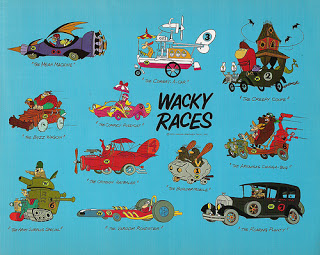The Modern Family's Guide to Technology to take on a European Vacation
This summer I took my Seattle-based family of five for a three-week trip to Europe. We had been promising the trip to our kids since they were little, and this year we were finally able to go. We had a wonderful time!
Here are my tech-related traveling tips.
Disclaimer: I am not being paid to write this, and there are no affiliate links. I’m writing this to help me remember my trip, and in the hope that it will be helpful to other families (and maybe even couples and individuals) planning similar trips.
Hardware Tips
Take your mobile phones
Take one modern mobile phone per person. Android, iPhone, either is fine, but you’ll want something with a SIM slot and nice camera.
Leave your laptops at home
I didn’t take any laptops with me, and I was able to do everything I needed to do using just my mobile phone. It was a relief to not have to lug around a laptop.
A few times I had to request the desktop version of a web site, but for the most part, the mobile phone worked fine for both apps and web browsing.
Obviously I didn’t do any long-form writing on my phone.
I suppose an iPad, Kindle, or Android tablet would be a possible alternative. It might be a compromise between a phone and a laptop. I didn’t take any tablets on my trip.
Leave your cameras at home
We didn’t take any non-phone cameras with us. Our phone cameras were good enough for most pictures. (Note: if we were going on a wildlife safari to Africa, we’d still take “real” cameras, so we could use telephoto lenses. But for the kinds of pictures we wanted to take in Europe, phone-based cameras worked fine.)
Tip: Most museums, and even most churches allowed people to use their phones to take pictures of the art. This is a welcome change from the “No cameras allowed” policy of the past.
International USB Chargers
Take international-style USB chargers, that have built-in adapters for foreign wall power sockets. Look for chargers that have at least 2 USB ports, and ones that are rated for 2.1 amps, because that sort of charger will charge your phone faster than a lower-power charger. It’s also nice to get a “pass through” charger, that lets you plug another electrical device into the charger. This is handy for hotel rooms with no extra outlets.
I didn’t use this particular model of charger, but it’s the kind of charger I’m talking about.
Tip: Many USB chargers have ludicrously bright power lights. Before you leave home, cover the power lights with black electrical tape. Otherwise they’ll keep you awake at night in the hotel room.
When traveling in the US I take a larger 6-port charger, so that I can charge the whole family’s devices from one hotel power outlet. (And in my car I use a 4-port cigarette lighter charger.) But in Europe, because we were often on trains with per-seat power outlets, it was more convenient to use multiple 2-port USB chargers.
Take extra chargers and USB cables and ear buds
Take extra USB chargers and charging cables and ear buds. They will get lost and break. It’s convenient to have spares. Don’t bring a too many, though. If you run out, USB chargers and cables and ear buds are available for low cost in vending machines and stores across Europe.
Take battery packs
Take a cheap USB Battery Pack with you. This will ensure you always have at least one working phone, no matter how long you stay out, or how much you use maps / web / photos. In fact, consider taking one pack for every two family members.
Phone cases
Put inexpensive rugged phone cases on your phones, to reduce damage from accidental drops. My family is partial to Otterbox and Incipio cases, but shop around to find something you like.
Selfie sticks
You should swallow your pride and take a selfie stick. It makes it so much easier to take good group photos. Be aware of your surroundings, and don’t annoy your fellow tourists.
I confess that I was too proud to take a selfie stick, and as a result I have very few photos that include everyone in my family. I regret that!
Proof you can take a photo of your whole family without using a selfie stick. But posing options are limited:
Use a mesh bag to organize your electronics
As any backpacker knows, small mesh bags are invaluable for keeping track of small items. Buy a mesh bag from a camping store (or a laundry store) and use it to store all your chargers and cables. For my family, something that worked well was for me to carry the whole family’s chargers and cables. I’d hand them out at the beginning of a train or plane trip, and collect them at the end of the trip.
Phone service
You don’t have to have phone service for your trip. You can get pretty far just using WiFi.
However, if possible, I recommend that you get mobile phone service for at least one of your family’s phones. It is tremendously useful and convenient to have for maps, search, and translation.
Free International Roaming
If you have T-Mobile, get their international roaming plan added to your account before you go. It gives unlimited data and texts in many countries. Bonus: The plan only promises 2G speeds, but we found in several places we were getting much higher speeds. My guess is that some countries have turned off 2G network access, and in those countries you’re getting the higher 3G or 4G speed for free. Presumably this extra speed won’t last forever, but it’s a nice benefit for now.
Expensive International Roaming
My impression is that other US carriers have fairly expensive international roaming plans. But since I’m not a customer, I don’t know the details. Check with your carrier – maybe they have a plan that fits your needs and budget.
Buying a local SIM while in Europe
If you don’t have T-Mobile, most European countries have relatively inexpensive short-term SIMs available for purchase at kiosks in airports. You’ll need to have an unlocked phones to do this.
Potential problems with older Verizon and Sprint phones
If you have an old, pre-4G, Verizon or Sprint phone, that doesn’t have a SIM slot, you will have trouble using European phone networks.
Make sure your phone is carrier unlocked
If you bought your phone from a mobile carrier, it’s probably locked to their network. That makes it difficult to use with another network’s SIMs. Before your trip, contact your carrier and ask them to unlock your phone. They will usually be willing to unlock your phone, but it depends upon the carrier and the terms of your contract. You may have to pay an unlocking fee.
If all else fails, consider buying a travel phone
If you can’t unlock your phone, or if your phone doesn’t have a SIM slot, consider buying a phone just for the trip. As of the fall of 2017 you could get a used unlocked iPhone 5s 16GB for $125. That model phone would make a good travel phone. There are similar deals available on older high-end Android phones.
Receiving text messages while on vacation
If you are using a country-specific SIM while you’re traveling, you may run into a problem. Any text message sent to your normal phone number won’t get to your phone while you are using a different SIM in the phone. This could be a problem for you, because many online services want to send you a text message to verify your identity. You won’t receive the text message while you’re using a different SIM.
The simplest way to deal with this problem is to cross your fingers, and hope that you don’t need to receive texts while you’re on vacation.
The second-simplest way is to sign up for T-Mobile international roaming, at least if you’re already a T-Mobile customer.
If you’re a customer of another phone company, you might consider signing up one of your phones for an international roaming plan, that lets you receive and send texts to/from your US phone number while traveling. Even if it’s expensive, it may save you a lot of trouble if you need to receive a text message while you’re on vacation.
If you’re an advanced techie, you could consider signing up for a VoIP service (like Google Voice), which allows you to send and receive text messages over the web. It can also be set up to forward your voice calls from your main number to your travel SIM number. But using a VoIP service is complicated. It’s probably more trouble than it is worth for most people.
WiFi, power, and mobile phone coverage
Here’s what I found in my trip, which covered Spain, Paris, and Frankfurt.
WiFi
Most tourist hotels and apartments have some form of WiFi. Usually it’s free with your room, although some high-end or business oriented hotels will charge you. Hotel WiFi can be slow and flakey.
Many tourist restaurants have free WiFi. Ask your server for the password.
Many museums have free WiFi. A few museums have QR codes on exhibits that you can scan to learn more about the exhibit item.
Some towns have some form of public WiFi, but I was never able to get it to work.
Most airports have free WiFi.
Some high-speed trains have WiFi, either free or paid.
Unfortunately there is currently no transatlantic plane flight WiFi service. I think it’s a technology limitation.
USB / wall power
USB and wall power plugs are available at each seat on most planes and high- speed trains. The wall power plugs are European-standard plugs and voltage.
Just as in the US, many airports have at least a few USB ports and electrical outlets scattered around the waiting area.
In Madrid I even found USB charge ports installed on one of of the transit buses!
Mobile phone coverage
Mobile phone service is very good in major cities. Mobile phone service can be spotty in the countryside.
Lunch with phones on a Spanish high speed train:

Keeping your phones from being stolen
Unfortunately, pickpockets and thieves are common in tourist areas of major European cities. Your phone is an easy target. Thieves like to steal phones because:
- They’re easy to steal.
- They’re valuable.
- Older phones can usually be unlocked, erased and sold.
- Newer phones, that can’t be unlocked, can still be stripped for parts (battery and screen) that can be sold.
- SIMs can be taken out of both old and new phones
- An unlocked SIM can be used to charge money to your phone bill.
- An unlocked SIM can be used to receive texts sent to the SIM’s phone number, useful for identity theft.
You can take some steps to minimize the potential problems of theft:
Take your older phones
If your family has several generations of phones laying around, consider taking the older phones. That way you won’t feel as bad if they’re broken, lost, or stolen. Of course you have to balance this against the benefits of taking your newest phones, which will have the best cameras.
Wear anti-theft clothing
Consider buying some pickpocket-proof pants. If you cary a purse or small bag, store your phone in a hard-to-get-into zippered internal pocket. Figure out a way of carrying your phone so that it’s in front of you, where you can keep an eye on it. Some backpacks have phone pockets on the shoulder straps.
Don’t ever leave your phone on a table in a public place.
Turn on “Find my Phone”
Both Android and iPhone have an optional feature you can turn on to make it easier to find a lost phone. It’s called Find my Device on Android, and Find my iPhone on iOS.
Tip: Thieves know to power off stolen phones to prevent them from being tracked. But the feature is still handy for finding phones that are lost or misplaced rather than actually stolen.
Put a passcode on your phone lock screen
You should have at least a 4 digit passcode on your phone lock screen. In addition to keeping thieves from being able to erase your phone in order to resell it, this will make it harder for thieves to break into your phone to steal your identity.
SIM Lock your phone SIM
Add a PIN to your SIM card. Having a PIN on your SIM is annoying, because you’ll have to type the PIN to unlock your SIM every time you reboot your phone. But having a SIM lock can save you a lot of trouble and money if thieves steal your phone. Without a SIM lock, the thief can take the SIM card out of your phone, put it into another phone, and then charge hundreds of dollars to your phone account by calling for-pay telephone numbers.
Without a SIM lock, thieves can also put your phone’s SIM into another phone to receive texts sent to your phone number. An ambitious thief could use your phone’s SIM to hijack your online accounts.
Know how to report a lost/stolen SIM to your phone carrier
If your phone is lost or stolen, you should report it to your phone carrier right away. If you’ve put a lock screen passcode on your phone and added a SIM lock, you probably will be OK. But there is always a chance that the thief has figured out a way to bypass those lock codes.
Tip: Print out your phone account information (carrier customer service number, account number, your phone number, and the SIM serial number) and carry it with you on your trip. Keep that paper separate from your phone. (Do the same for your passports!)
Keeping your accounts from being stolen
Be careful when you use public WiFi. Just as in the US, using public WiFi in Europe means it’s possible for bad guys to listen in on the data being sent and received by your phone. Bad guys can even set up fake servers, that pretend to be Facebook, or Gmail, or your bank, and try to trick you into revealing your login name and password.
Just like in the US, there are things you can do to make it less dangerous to use public WiFi in Europe:
- Avoid using “high value” web sites, like your bank, from public WiFi.
- Avoid visiting “http” web sites from public WiFi. “https” web sites are more secure.
- Use an up-to-date version of your phone’s operating system.
- Use up-to-date versions of your apps.
Tip: Before you leave the US, consider turning on “two factor authentication” for important accounts. Two Factor Authentication will make it harder for identity thieves to impersonate you. However, there is a tradeoff. Most “two factor authentication” systems use text messages. This means you’ll have to be able to receive the text messages while you’re traveling, which means you’ll have to set up international roaming for at least one of your phones.
Essential apps
Tip: I work for Google in my day job, so the following list is a little Google-centric. 😇
Google Docs
Use Google Docs App Store Play Store to share a trip itinerary with your family. (You can also share an edited version with parents and neighbors.) An itinerary is a day-by-day list of what you are doing. Put in dates, cities, flight and train times, hotel contact info, and “must see/do” lists. Using a shared document makes it easier to keep the information up to date.
Tip: Turn on “offline mode”, which stores a copy of your documents locally on the phone, so that you can read and edit them even when you don’t have internet access.
Google Maps
Google Maps App Store Play Store is hugely useful when traveling in Europe, not just for maps and navigation and transit directions, but also for local restaurant and attraction reviews. I felt like a local being able to read the auto-translated reviews of all the bakeries and grocery stores near my hotel.
Tip: Download the area you’re planning on visiting as an offline map. That way you can get around even if you don’t have WiFi or phone service.
Tip: Double-check opening hours, since Google Maps doesn’t always list the correct opening hours, or account for local holidays, or restaurants being closed due to the owner’s vacations.
Tip: Google Maps lets you mark map locations using various icons. For example I found it helpful to mark my hotel on the map, as well as any sites I was interested in seeing in that city. That made it easier to plan my day, and to plan what to do next. I could quickly look at the map and see if there was anything within walking distance.
Vietnamese food was a welcome treat. Tastes just like back home! Restaurant found with Google Maps.
Google Photos
Google Photos App Store Play Store provides free unlimited photo and video storage. It also provides an excellent photo search feature.
The way my family used Google Photos during our trip was that we would take pictures and videos during the day. Then, each evening, when we returned to our hotel, we would bring the Google Photos app to the foreground, and keep it there while it uploaded the day’s pictures and videos.
Some hotels had very slow WiFi, so sometimes we had to wait until we got to a better hotel to do this.
Once the upload had finished, we used the “Free up space” menu item to delete all the locally stored photos, which freed up phone storage for the next day’s photos and videos.
Tip: Whenever you pass a restaurant or store or attraction you’re interested in visiting, take a picture of it. That can be helpful when you’re trying to remember the name of the restaurant the next day.
Google Translate
Google Translate App Store Play Store is able to translate many signs and menus. And while many people in Europe speak English, it is sometimes useful to be able to translate an English phrase into the local language.
Tip: Use Google Translate to translate text on menus and sign. Tap on the camera icon in the app.
Tip: Download a language pack for each country your visit. This enables Google Translate to work even when you don’t have WiFi or phone service.
Google Hangouts
Google Hangouts App Store Play Storeis a free group messaging app.
My family used Google Hangouts group messaging to stay in touch, not only with each other, but also with grandparents back home. We got into the habit of sending a few highlight pictures and a short description of our day’s events to the grandparents each day. It was easy to do, and afterwards we saved the conversation as a nice record of our trip.
Tip: There are many other group messaging apps, use whatever one your family is comfortable with.
Tip: Include grandparents in the group chat, it makes it more fun to have an audience to share your stories with.
Tip: If you’re staying at apartments rather than hotels, you may need to download a country-specific chat application to stay in touch with the apartment landlord. For example, WhatsApp is popular in some European countries.
We watched the Bastille Day fireworks on cable TV in our rental apartment in
Paris, while in a group Hangout chat with my mom back in America, (She was
watching on a live-stream.)
Google Keep
Google Keep App Store Play Store is a handy To Do list app. I used it to keep track of snippets of information about places I wanted to visit, as well as tasks to do when returning to the US.
Google Trusted Contacts
Google Trusted Contacts App Store [PlayStore] is a cross-platform app that lets you see where your family’s phones are in real time. Handy for meeting up in a large museum, at least as long as GPS reception is good.
Tip: If your family is 100% iPhone, Apple has a similar, iPhone-only “Find my friends” app.
TripIt
I had a TripIt Pro account through my workplace. It was helpful because it kept me up-to-date on the status of my airplane trips. Things like telling me when the plane had arrived, which gate it was at, and when the flight was delayed.
TripAdvisor
TripAdvisor is a good source of information on attractions and restaurants. Its UI is a little slow, and it tries hard to up- sell travel packages. But if you can get past all the advertising, it’s a good resource for finding out what to see and do in a new city.
Inessential, but fun, apps
Consider using a diary app to keep track of you trip.
The text adventure game 80 Days App Store Play Store is fun to play while traveling.
Similarly, Old Man’s Journey App Store Play Store and Burly Men at Sea App Store Play Store are fun quick travel-themed adventure games.
You can use your standard social and media apps while traveling. Instagram, YouTube, Google Books, Google Play Music, and so on. For media apps be sure to download media ahead of time, to be able to use the app while you don’t have network connectivity.
Buying attraction tickets online
Most of the large museums and attractions in Europe have online ticket sales. The museum web site usually has an English-language page. You pay by credit card, and you receive the ticket as an email containing a PDF file. You are instructed to print out the PDF and bring it with you to the museum.
You don’t need to print out the ticket, though. It is also possible to show the PDF on your phone screen. The ticket PDF usually has a bar code (or QR code), and the ticket-taker’s bar code scanner will usually work with the phone screen just as well as on paper.
Tip: Be sure to zoom in far enough that the individual stripes of the bar code are visible.
Tip: Sometimes it’s helpful to use your phone’s web browser’s “Request Desktop Site” mode, to request the desktop version of the web site. Sometimes the desktop web site has more information and/or features than the mobile version.
Tip: Take cropped screen shots of your family’s tickets’ QR codes, and arrange them all together in your phone’s photo gallery. This makes it easier at the ticket gate, since you can quickly swipe from ticket to ticket, to quickly present all your family’s tickets to the ticket taker.
If you don’t know how to take a screen shot on your phone, ask your kids. 😁
Tip: Contact your credit card company before you travel, and let them know that you will be traveling to Europe. Doing this can help you avoid having your credit card declined due to unusual account activity.
Conclusion
Mobile phones are essential for modern traveling. The last time I went to Europe, over 20 years ago, I had to use paper guide books and pay phones and post cards and a film camera. Revisiting Europe today, with mobile phones, it was so much easier to get around, and I think I saw more things. I certainly took more pictures!
If you read this far, I assume you’re planning your own trip to Europe. I hope that this article gave you some good information to help you have a good trip. I hope you and your traveling companions have a great time!
A family we met in Madrid:


